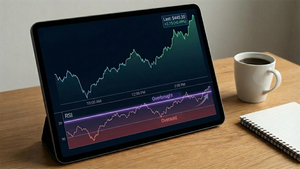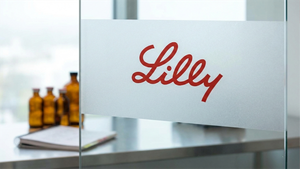
Eli Lilly (NYSE: LLY) is poised to further solidify its dominance in the burgeoning diabetes and weight loss markets following a cascade of overwhelmingly positive clinical trial results for its blockbuster injectable Mounjaro (tirzepatide) and its highly anticipated oral GLP-1 receptor agonist, Orforglipron. The findings, which demonstrate Mounjaro's efficacy in pediatric type 2 diabetes and significant cardiovascular benefits, alongside Orforglipron's superior performance against an existing oral competitor, signal a transformative era for patients and a substantial boost for the pharmaceutical giant. These developments not only expand the treatment landscape for millions but also intensify the competitive dynamics within a rapidly growing therapeutic area, promising both innovation and potential market disruption.
A New Frontier for Metabolic Health: Eli Lilly's Latest Clinical Victories
Eli Lilly has recently unveiled a trove of compelling clinical trial data for both Mounjaro and Orforglipron, marking a significant advancement in the treatment of type 2 diabetes and obesity. These results underscore the company's robust pipeline and its commitment to addressing critical unmet medical needs, while simultaneously reshaping investor expectations and market dynamics.
For Mounjaro (tirzepatide), a dual GIP/GLP-1 receptor agonist, the detailed results from the SURPASS-PEDS trial were a highlight, presented at the European Association for the Study of Diabetes (EASD) Annual Meeting 2025 and published in The Lancet. This Phase 3 study, the first of its kind, evaluated Mounjaro in children and adolescents (ages 10 to less than 18) with type 2 diabetes inadequately controlled with metformin, basal insulin, or both. The results were remarkably positive: at 30 weeks, Mounjaro met all primary and key secondary endpoints, showing superior improvements in A1C and Body Mass Index (BMI) compared to placebo. Specifically, Mounjaro (pooled doses) lowered A1C by an average of 2.2% from a baseline of 8.05%, with an impressive 86.1% of participants on the 10 mg dose achieving an A1C of ≤6.5%. Furthermore, the 10 mg dose reduced BMI by an average of 11.2% at 30 weeks, with sustained improvements through a 52-week extension. The safety profile was consistent with adult studies, primarily featuring mild-to-moderate gastrointestinal issues, with low discontinuation rates due to adverse events. This data paves the way for an expanded indication, offering a much-needed therapeutic option for a younger, vulnerable population.
Concurrently, Orforglipron, Eli Lilly's investigational once-daily oral GLP-1 receptor agonist, showcased its potential to revolutionize the oral diabetes and weight loss market. Detailed results from several Phase 3 trials, including ATTAIN-1 (obesity/overweight without diabetes) and ACHIEVE-3 (type 2 diabetes inadequately controlled with metformin), were presented at EASD 2025 and published in The New England Journal of Medicine. In ATTAIN-1, the highest dose (36 mg) led to an average body weight reduction of 27.3 lbs (12.4%) at 72 weeks, significantly outperforming placebo. It also demonstrated improvements in cardiometabolic risk factors and prediabetes reversal. The ACHIEVE-3 trial was particularly impactful, showing Orforglipron's superiority over oral semaglutide (Rybelsus) from Novo Nordisk (NYSE: NVO) in both A1C reduction and weight loss over 52 weeks. Orforglipron achieved an A1C reduction of up to 2.2% and an average weight loss of up to 19.7 lbs (9.2%) at the highest dose, significantly surpassing oral semaglutide's figures. The safety profile mirrored that of the GLP-1 class, with common gastrointestinal side effects.
The initial market reaction to Orforglipron's topline ATTAIN-1 results in early August 2025 saw Eli Lilly's shares drop by approximately 14%, wiping out about $100 billion in market value. This was largely due to the 12.4% weight loss falling short of some ambitious analyst predictions (13-15% or more) and being numerically lower than some injectable GLP-1s. However, the subsequent release of full ATTAIN-1 data and, critically, the head-to-head ACHIEVE-3 results against oral semaglutide provided a more nuanced and generally positive industry reaction. Analysts recognized that Orforglipron’s strong performance against its oral rival, coupled with the convenience of a once-daily pill, significantly enhances its competitive profile. Eli Lilly executives have been quick to emphasize that the oral administration of Orforglipron represents a "holy grail" for many patients, promising improved adherence and accessibility for millions hesitant about injectable therapies. These clinical victories collectively reinforce Eli Lilly's pioneering role in metabolic health, setting the stage for substantial market expansion and intensified competition within the pharmaceutical sector.
A Shifting Landscape: Identifying the Winners and Losers
Eli Lilly's recent announcements are poised to create significant ripples across the pharmaceutical industry, clearly delineating potential winners and losers as the competitive landscape for diabetes and weight loss therapies intensifies. The company itself stands out as the unequivocal primary winner, leveraging its innovative pipeline to capture an even larger share of these rapidly expanding markets.
Eli Lilly (NYSE: LLY) emerges as the dominant victor. With Mounjaro (and its obesity-specific counterpart, Zepbound) already a blockbuster, the new pediatric indication and proven cardiovascular benefits extend its market reach and solidify its premium positioning. Mounjaro's Q2 2025 sales surged 69% to $5.2 billion, while Zepbound more than doubled to $3.4 billion, exceeding analyst expectations and capturing 57% of the U.S. branded obesity drug market. The addition of Orforglipron, an effective once-daily oral GLP-1, provides a crucial entry into the oral segment, a market potentially more accessible and appealing to a broader patient population than injectables. Orforglipron's demonstrated superiority over oral semaglutide positions Lilly to challenge Novo Nordisk's (NYSE: NVO) existing oral offerings directly, potentially leading to a significant market share shift. This dual-pronged strategy ensures Lilly's continued revenue growth and reinforces its status as a leader in cardiometabolic health.
Conversely, Novo Nordisk (NYSE: NVO), currently Eli Lilly's main rival in the GLP-1 space with Ozempic, Wegovy, and oral Rybelsus, faces increased pressure. While Novo Nordisk continues to hold a strong market position, especially with its injectable offerings, Orforglipron's head-to-head victory against oral semaglutide (Rybelsus) poses a direct threat to its oral market segment. This intensified competition could force Novo Nordisk to accelerate its own pipeline development and potentially adjust pricing strategies to maintain its market share. Companies with less efficacious or less convenient GLP-1 or weight loss therapies, or those with significant investments in older-generation diabetes treatments, may find themselves increasingly marginalized.
Smaller pharmaceutical and biotechnology companies actively developing novel obesity or diabetes treatments, especially those with non-GLP-1 mechanisms of action or less compelling efficacy/safety profiles, could also face significant challenges. The high bar set by Lilly's Mounjaro and Orforglipron will make it difficult for new entrants to gain traction unless they offer truly differentiated benefits or superior cost-effectiveness. Furthermore, the advancements by Eli Lilly might lead to a re-evaluation of investment priorities across the industry, potentially shifting capital towards more advanced and competitive therapies, leaving less robust pipelines at a disadvantage.
Industry Tides: Broader Implications and Future Trends
The groundbreaking clinical trial results from Eli Lilly for Mounjaro and Orforglipron represent more than just individual drug successes; they signify a profound shift in the broader pharmaceutical landscape, particularly within metabolic health. These advancements are poised to accelerate existing industry trends, spark new strategic imperatives, and potentially invite closer regulatory scrutiny.
This event strongly reinforces the ongoing trend towards highly effective, multi-modal therapies for chronic conditions like type 2 diabetes and obesity. Mounjaro's dual GIP/GLP-1 agonism and Orforglipron's potent GLP-1 agonism demonstrate the power of targeting multiple pathways or delivering high-efficacy single-target oral convenience. This will likely push competitors to develop increasingly potent and user-friendly compounds, intensifying the "efficacy arms race" in a market that prioritizes significant weight loss and glycemic control. The emergence of a highly effective oral GLP-1 like Orforglipron also signals a pivotal moment, as it addresses a significant patient preference for non-injectable treatments, potentially broadening the market reach beyond those comfortable with self-injections.
The ripple effects on competitors, particularly Novo Nordisk (NYSE: NVO), are undeniable. While Novo Nordisk continues to innovate, Eli Lilly's sustained clinical successes, especially the head-to-head win against oral semaglutide (Rybelsus), will undoubtedly escalate the competitive pressure. This could lead to an accelerated pace of R&D, more aggressive marketing strategies, and potentially price competition in segments where both companies have strong offerings. Smaller biotechs developing GLP-1s or related mechanisms may find it increasingly difficult to carve out a niche unless their therapies offer truly superior outcomes or unique patient benefits, such as different routes of administration or significantly better side effect profiles. Strategic partnerships and acquisitions within the sector could also increase as companies seek to bolster their pipelines and competitive positions.
From a regulatory standpoint, the sheer efficacy and safety profiles of these new drugs could streamline approval processes for similar high-impact therapies, assuming robust clinical data. However, the rapidly expanding market and potentially high costs of these drugs could also draw increased attention from policymakers and payers regarding affordability and access. Governments and insurers might explore new models for coverage and reimbursement to manage the significant financial implications of widespread adoption of these expensive chronic treatments. Historically, breakthroughs in chronic disease management, such as the introduction of statins for cholesterol or novel insulins for diabetes, have always led to both clinical excitement and considerable debate over cost and access, a pattern likely to repeat with these latest metabolic therapies.
The Road Ahead: What Comes Next
The impressive clinical achievements of Eli Lilly's Mounjaro and Orforglipron have set the stage for a dynamic period of innovation and competition in the pharmaceutical industry. The immediate and long-term future will be characterized by a rapid expansion of treatment options, strategic adaptations from key players, and evolving market opportunities.
In the short term, Eli Lilly is expected to swiftly pursue regulatory submissions for Mounjaro's pediatric type 2 diabetes indication and for Orforglipron in both obesity and type 2 diabetes. Analysts anticipate a potentially fast-tracked FDA review for Orforglipron, possibly under new priority programs, which could see it on the market within one to two months, a remarkably rapid timeline. This accelerated approval would immediately intensify competition in the oral GLP-1 space. Eli Lilly will also need to scale up manufacturing for both drugs to meet anticipated demand, a challenge that has historically plagued new blockbuster therapies. For patients, these developments mean more accessible and diverse treatment options, particularly for those who prefer an oral medication or have historically lacked effective therapies, such as children with type 2 diabetes.
Looking further ahead, the long-term possibilities are immense. The success of oral GLP-1s like Orforglipron could trigger a broader shift towards oral formulations for other complex biologic drugs, inspiring research into oral delivery systems for peptides and proteins that were previously only viable as injectables. This could open up entirely new therapeutic avenues. Strategic pivots will be crucial for competitors; Novo Nordisk (NYSE: NVO), for instance, may need to double down on its own oral pipeline and combination therapies, or explore novel mechanisms of action to differentiate its offerings. Market opportunities will emerge for diagnostic companies developing better tools for patient stratification, as well as for digital health platforms that can support adherence and lifestyle modifications alongside these potent medications. However, challenges will also arise, particularly around drug pricing, reimbursement models, and ensuring equitable access globally.
Potential scenarios range from a continued duopoly between Eli Lilly and Novo Nordisk dominating the market to a more fragmented landscape if new entrants bring highly differentiated, potentially even more efficacious or significantly cheaper alternatives. A key outcome to watch will be how the market segments itself between injectables and oral pills, and how payers decide to cover these various options. The overall impact on public health could be substantial, with millions more gaining access to effective treatments for chronic conditions that contribute to a significant burden of disease.
A New Era in Metabolic Health: Concluding Thoughts
The recent cascade of positive clinical trial data for Eli Lilly's Mounjaro and Orforglipron marks a pivotal moment in the ongoing battle against type 2 diabetes and obesity. These advancements solidify Eli Lilly's (NYSE: LLY) preeminent position in the cardiometabolic space and underscore a broader industry trend towards increasingly effective and patient-friendly therapeutic solutions. The expansion of Mounjaro's utility to pediatric type 2 diabetes and its validated cardiovascular benefits cement its status as a comprehensive treatment, while Orforglipron's impressive efficacy as a once-daily oral GLP-1 promises to democratize access and redefine convenience in chronic disease management.
The key takeaway from these developments is clear: the standard of care for diabetes and obesity is rapidly evolving, driven by unprecedented innovation. Eli Lilly's dual success provides a powerful, diversified portfolio that addresses a wide spectrum of patient needs and preferences, from potent injectables to highly effective oral alternatives. This strategic positioning not only ensures robust future revenue streams for Lilly but also intensifies the competitive environment, challenging rivals like Novo Nordisk (NYSE: NVO) to accelerate their own research and development efforts. The pharmaceutical market, particularly in the GLP-1 sector, is poised for continued explosive growth, driven by an aging population and increasing rates of metabolic disorders worldwide.
Moving forward, investors should keenly watch several factors. Firstly, the speed and breadth of regulatory approvals for Mounjaro in pediatrics and for Orforglipron. Secondly, Eli Lilly's ability to successfully scale manufacturing to meet the anticipated surge in demand for these blockbuster drugs. Thirdly, the strategic responses of competitors, including new product launches, pricing adjustments, and potential M&A activities. Finally, the evolving landscape of payer coverage and reimbursement policies will be critical in determining the ultimate accessibility and market penetration of these high-value therapies. The lasting impact of these advancements will be profound, offering hope for improved health outcomes for millions and ushering in a new, more effective era in metabolic disease management.





